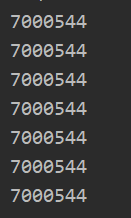Python的模块化编程
我们首先以一个例子来介绍模块化编程的应用场景,有这样一个名为requirements.py的python3文件,其中两个函数的作用是分别以不同的顺序来打印一个字符串:
def example1():
a = 'hello world!'
print (a)
print (a[::-1])
def example2():
b = 'hello again!'
print (b)
print (b[::-1])
if __name__ == '__main__':
example1()
example2()
其执行结果如下所示:
[dechin@dechin-manjaro decorator]$ python3 requirements.py
hello world!
!dlrow olleh
hello again!
!niaga olleh
在两个函数中都使用到了同样的打印功能,这时候我们可以考虑,是不是可以将这两个打印语句封装为一个函数呢,这样不就可以重复利用了?这就是模块化编程思维的雏形,让我们先对样例代码进行模块化的改造:
def rprint(para):
print (para)
print (para[::-1])
def example1():
a = 'hello world!'
rprint(a)
def example2():
b = 'hello again!'
rprint (b)
if __name__ == '__main__':
example1()
example2()
这里我们将两个打印语句的功能实现封装进了rprint的函数,执行结果如下:
[dechin@dechin-manjaro decorator]$ python3 requirements.py
hello world!
!dlrow olleh
hello again!
!niaga olleh
结果当然还是与模块化之前一致的。
结尾给大家推荐一个非常好的学习教程,希望对你学习Python有帮助!
Python基础入门教程推荐:更多Python视频教程-关注B站:Python学习者
https://www.bilibili.com/video/BV1LL4y1h7ny?share_source=copy_web
Python爬虫案例教程推荐:更多Python视频教程-关注B站:Python学习者
https://www.bilibili.com/video/BV1QZ4y1N7YA?share_source=copy_web





